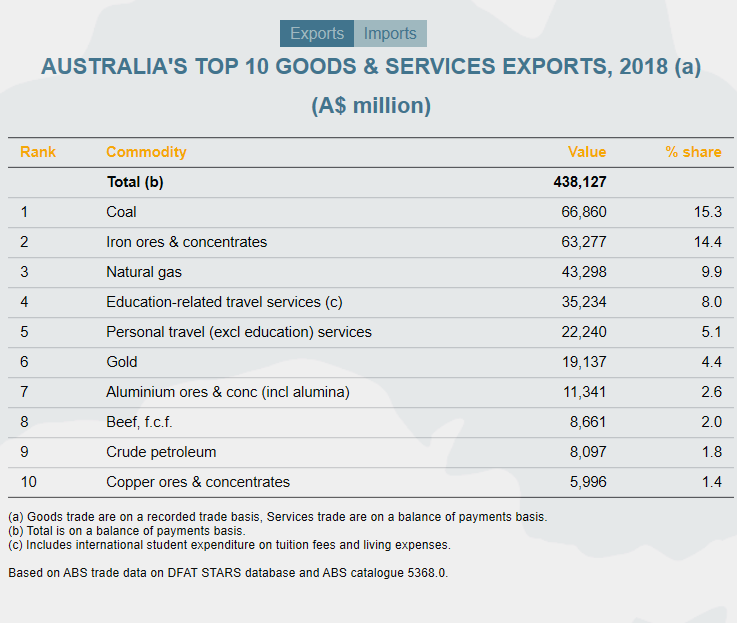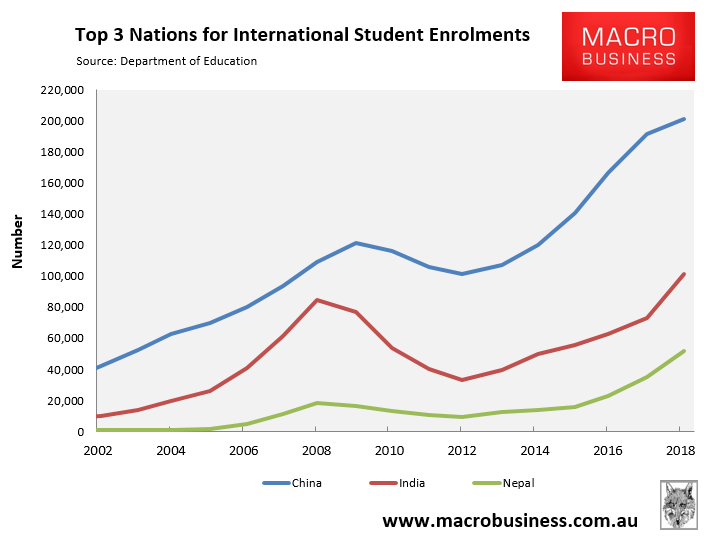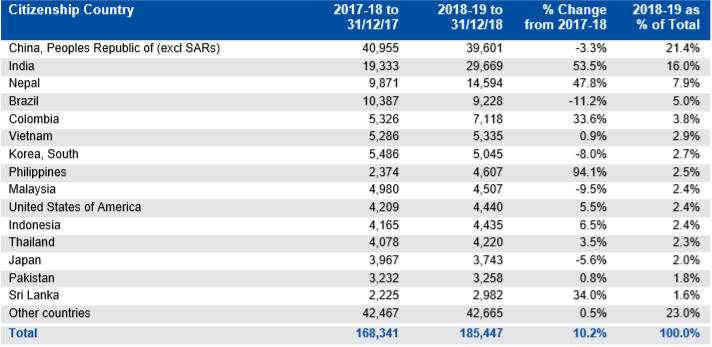On Tuesday night, immigration minister, David Coleman, gave a speech to the Sydney Institute where he talked up the immense benefits arising from Australia’s international student trade, which has supposedly delivered $35 billion of export revenue:
We will also maintain a sharp focus on our international student programme, the largest driver of temporary migration to Australia.
Let’s be clear: international education is extremely good for Australia. It’s a $35B export industry, which employs more than 200,000 Australians. It is one of our largest export markets, behind only iron ore, coal and natural gas. To put that $35B in perspective, last year our total wheat exports were worth $4B a year, our total beef exports were worth $8.5B.
It goes without saying that the integrity of our educational standards is fundamental to our success in this area, and Education Minister Dan Tehan is working to ensure that those high standards are always maintained.
The education sector supports high skill, high wage jobs – the exact kind of jobs we want to develop. International education must remain a key feature of our immigration system.
According to David Coleman, international education is Australia’s fourth largest export, “behind only iron ore, coal and natural gas”, but dwarfing other goods like wheat and beef exports. The below table from the Department of Foreign Affairs and Trade supports Coleman’s claim, at least superficially:

As you can see, footnote (c) contains an important caveat to this $35 billion figure: “includes international student expenditure on tuition fees and living expenses”.
This is important, since international students studying in Australia are legally permitted to work 20 hours per week, and many also do so illegally. To the extent that the income earned is used to pay for either tuition fees or living expenses, it does not represent a true export but merely economic activity.
Indeed, an international student working and supporting themselves is no more an export than a domestic student living away from home and doing likewise.
Hence, international education exports are likely significantly overstated; although we don’t know what the true number is.
This brings us to a related problem with the Government’s attempts to grow international student exports. As we already know, Chinese accounted for 201,000 international student enrolments as at March 2019, way ahead of second placed India (101,301) and third placed Nepal (51,559):

However, the latest biannual student visa data from the Department of Home Affairs shows a strong rotation away from China towards these other two nations. That is, the number of visa applications granted from China fell by 3.3% in 2H 2018, more than offset by huge growth from India (53.5%) and Nepal (47.8%):

According to the Department of Education and Training, the average economic activity generated per Chinese student was $72,000 in 2018, which was well above that for students from India ($52,700) and Nepal ($56,600).
The reason is simple: Chinese international students generally pay higher fees to study at higher quality Group of Eight Universities. By contrast, students sourced from India and Nepal typically study at cheaper second-tier institutions or private colleges, often for the express purpose of gaining employment and future permanent residency in Australia.
Therefore, as Chinese international student numbers inevitably decline – due to factors like rising political tensions – Australia will need to attract increasing numbers of lower quality students from sources like India and Nepal to maintain ‘export’ levels.
May’s Four Corners special on Australia’s international student trade was particularly damning of the quality of students coming from the Indian sub-continent, reporting widespread instances of plagiarism, academic misconduct, and students failing their courses.
So, will Australia’s universities further desecrate both entry and teaching standards, and will the government grant even easier access to working rights and permanent residency, purely to pump up the international student market?
What about the negative impacts on pedagogical standards, wages, and congestion in our crush-load Australian cities?

